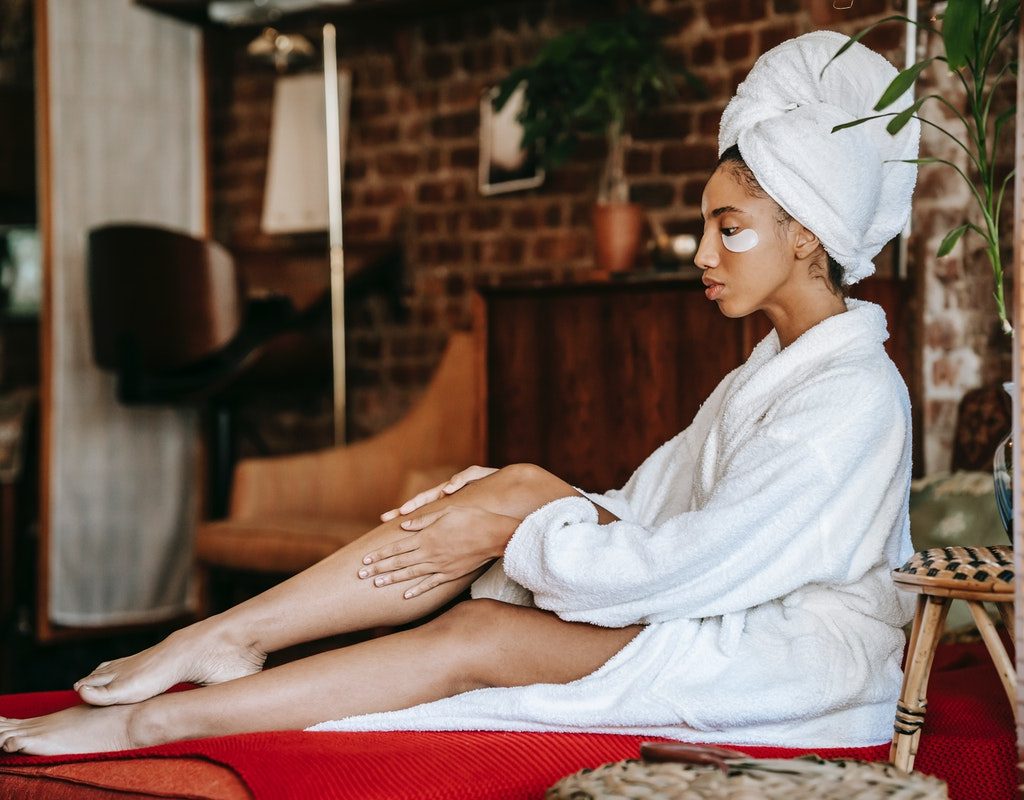Do you ever get out of the shower and still feel like you aren’t quite clean? Or maybe you start to dry yourself off and find dry skin coming off on your towel? While body soap gets rid of surface-level dirt and oil, it won’t clear out all of those dead skin cells. For a deep, full-body clean, show yourself some love and make exfoliation a part of your weekly routine.

What exfoliation does
To put it simply, exfoliation removes the dead skin cells that rest on the topmost layer of the skin. By clearing out the dead skin, exfoliation brings younger skin cells to the surface, enhances softness, and stimulates blood flow, all processes that produce a natural glow. This can also decrease hyperpigmentation and dark spots because the damage is usually contained in the upper layers of skin. By routinely exfoliating, you can reveal the new, fresh skin cells that haven’t been damaged from the sun, acne, or other irritants.
Dry skin can also trap dirt and oil in your pores, resulting in more acne-prone skin. While a high-quality cleanser can clean surface-level dirt, it won’t do much good if more muck is trapped under layers of dead skin.
Exfoliating can take place in the shower or out, with a brush, scrub, tool, or chemical. There are so many options out there to explore, even if you have sensitive skin. Be careful not to exfoliate too often though. Your body only has so much dead skin to get rid of, and if you keep going you may start taking off the healthy, protective layers you need.

How often should I exfoliate?
If you don’t have sensitive skin, scrub two or three times a week. Your body will tell you when you’re over-exfoliating because your skin will feel sensitive and nearly painful to the touch. If you have sensitive skin, however, stick to one exfoliation session per week. Listen to your skin, and if it becomes too painful, try a gentler product or reduce the number of times you exfoliate.
If you have any questions, speak to a dermatologist or aesthetician. They can take a closer look at your skin and determine how often you should exfoliate and what products and tools will work best on your skin type.
Know your skin type
Speaking of skin type, this is something you should know about yourself before undertaking any skincare routine. If you aren’t sure of yours, there are a lot of quizzes and tests you can take online, or you can speak to a sales associate at a beauty store.
The general skin types are dry, oily, combination, or normal. The terms are pretty self-explanatory, but our skin changes so much that it might be difficult to determine exactly what type describes you best. This is why you might need a little help from a professional to figure out what works best for you.

Products to try
Now that you know how to exfoliate safely, it’s time to pick the best products for you.
Buy at Amazon is a must-have. It’s made for dry, sensitive skin, so if you have oily skin, you may need to use the product more often than others.
M3 Naturals Himalayan Salt Body Scrub is a rougher, salt-based exfoliant, so we don’t recommend it for those with sensitive skin. However, it’s perfect for oily or combination skin that needs a stronger product to get rid of dead skin, dirt, and oils. Try out this cruelty-free scrub for spa-worthy results that will leave your skin looking and feeling fresh and youthful.
These products above work best with water, whether you’re in the shower or washing your face at the sink. However, you can also exfoliate out of the shower using a dry brush. Simply rub Wholesome Beauty’s Natural Dry Skin Body Brush across your body to gently rid your skin of dry skin before hopping in the shower to rinse it all off.
Regardless of what product or tool you decide to try, listen to your skin and stop if something doesn’t feel right. If you experience any irritation, redness, or pain, stop using all products and give yourself a chance to recover. However, if all goes well, continue to enjoy the benefits of exfoliation, and let that inner beauty shine on the outside.
BlissMark provides information regarding health, wellness, and beauty. The information within this article is not intended to be medical advice. Before starting any diet or exercise routine, consult your physician. If you don’t have a primary care physician, the United States Health & Human Services department has a free online tool that can help you locate a clinic in your area. We are not medical professionals, have not verified or vetted any programs, and in no way intend our content to be anything more than informative and inspiring.


